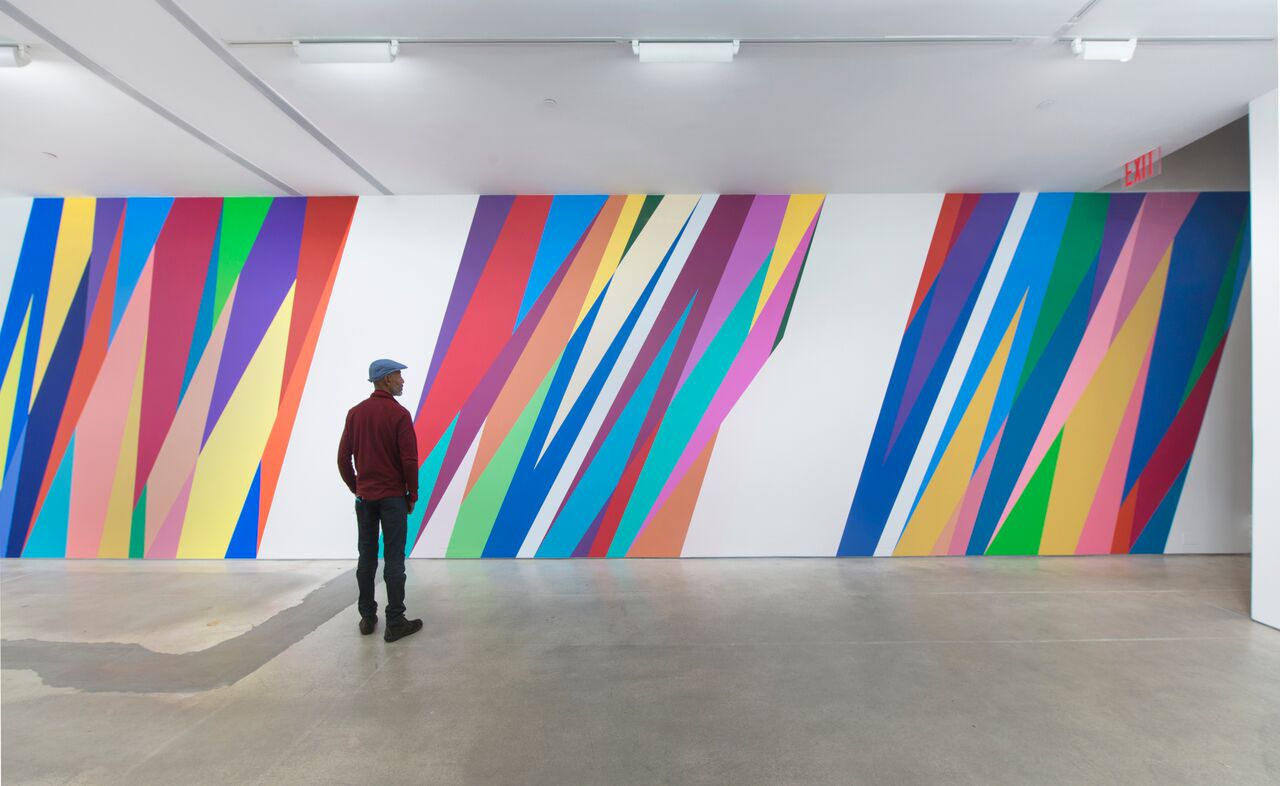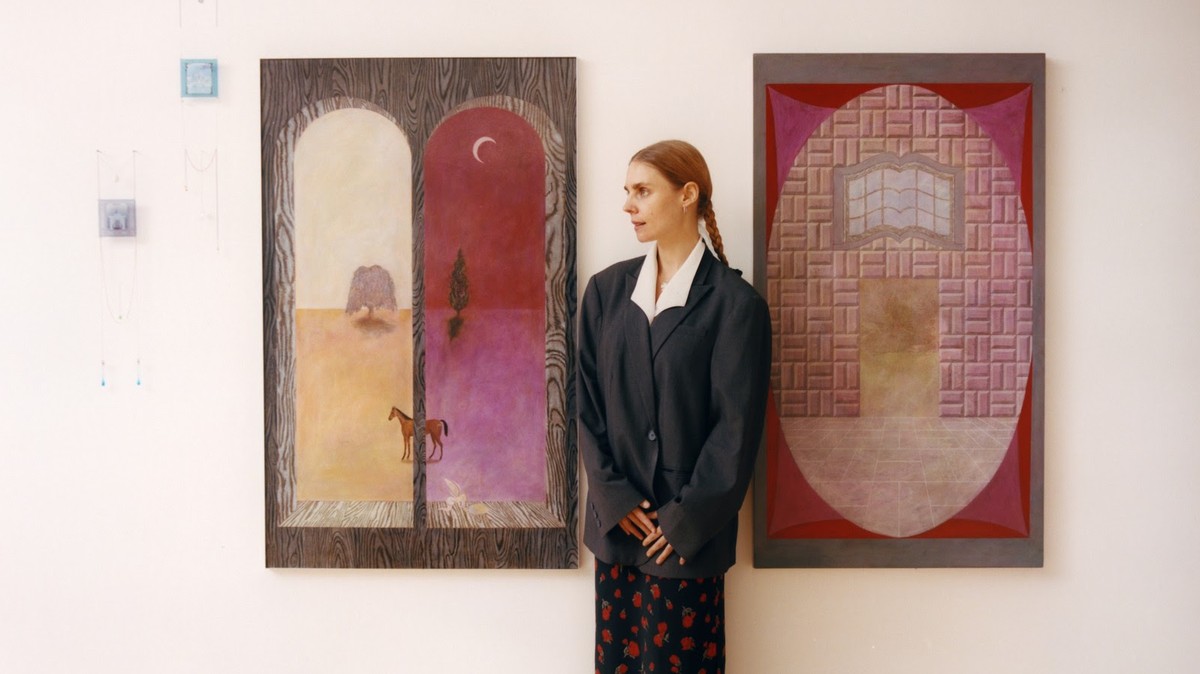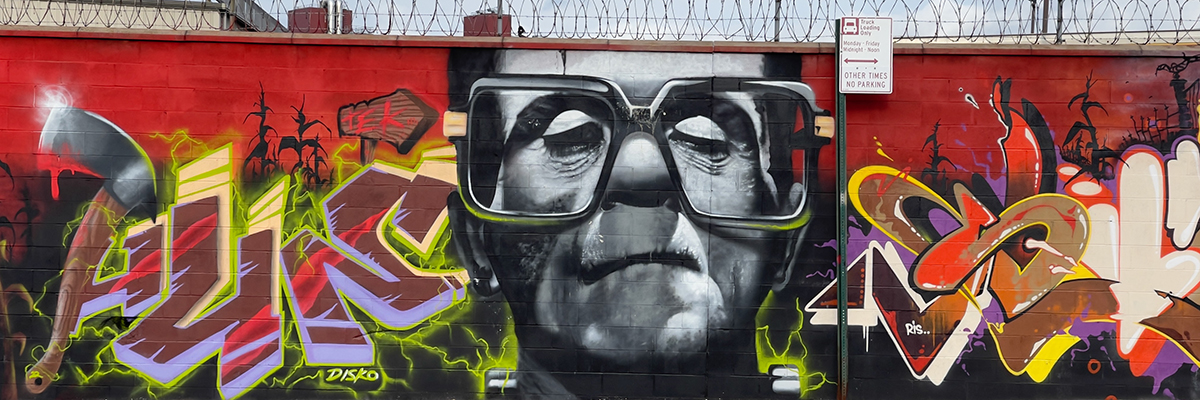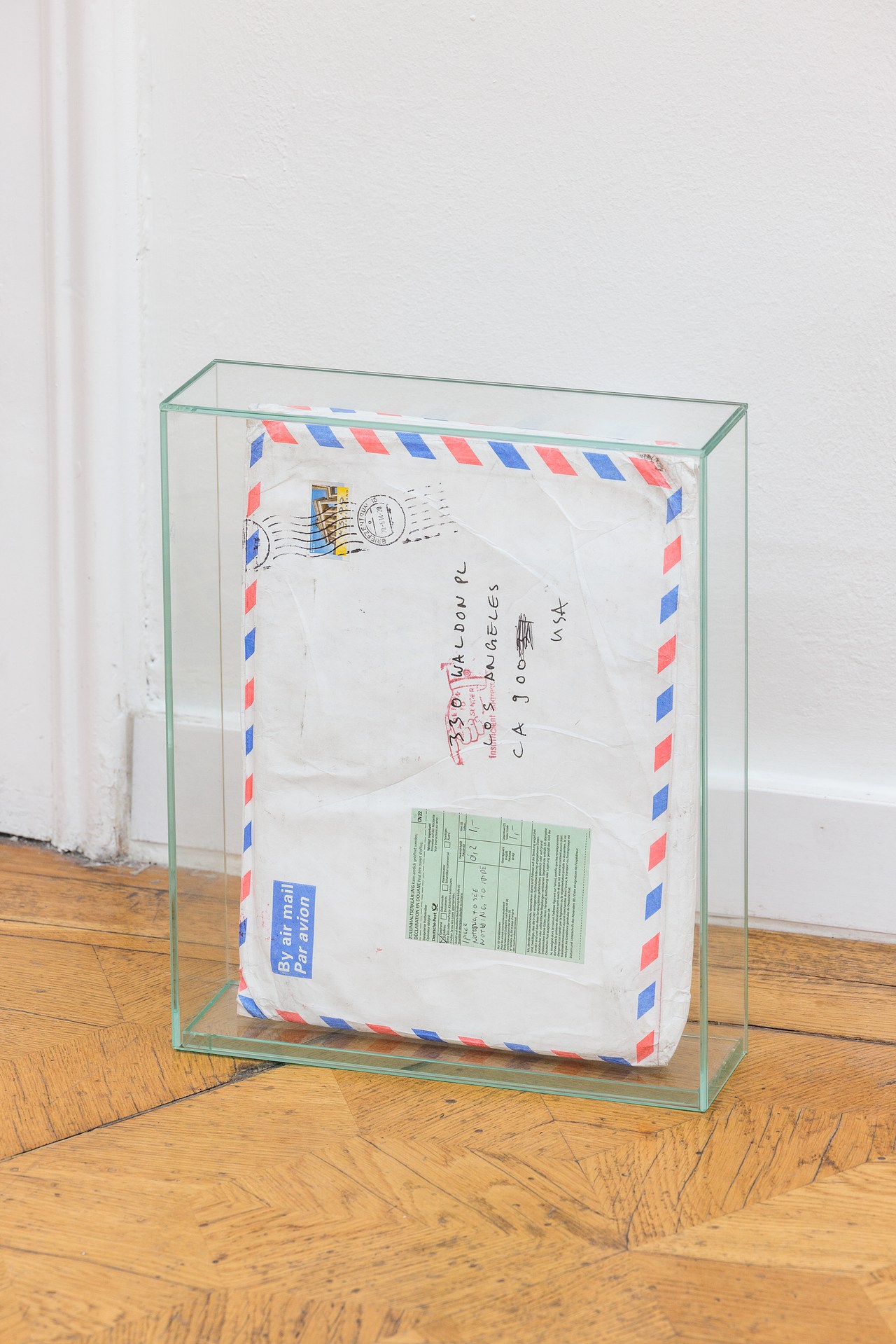Purple Heart (Psychedelic Prayer Rugs)
2017 - Textile (Textile)
48 x 30 inches
Baseera Khan
Designed by the artist and fabricated in collaboration with Kashmiri artisans in India, Baseera Khan’s Psychedelic Prayer Rugs combine visual iconography traditional to Islam, such as the crescent moon and lunar calendar, with brightly coloured symbols of personal significance to the artist: a pair of embroidered sneakers, a fragment of an Urdu poem, and the Purple Heart medal. Visually seductive yet charged with political and symbolic associations, the rugs bridge elements of American popular culture with aspects of Islamic worship that may be misunderstood in contemporary secular contexts. Encouraged by Khan to take their shoes off and interact with the rugs, viewers participate in a decolonizing process as they meditate on their poetic allusions or perform the traditional salat, the daily prayers that constitute one of the five pillars of Islam, the others being faith, charity, fasting, and pilgrimage to Mecca. Khan’s vibrantly colored handmade wool rug Purple Heart overlays block motifs with the inscription ‘I am muslima’ emblazoned across the width of the rug.
Designed by the artist and fabricated in collaboration with Kashmiri artisans, Baseera Khan’s Psychedelic Prayer Rugs combine visual iconography traditional to Islam, such as the crescent moon and lunar calendar, with brightly colored symbols of personal significance to the artist: a pair of embroidered sneakers, a fragment of an Urdu poem, and the Purple Heart medal. Visually seductive yet charged with political and symbolic associations, the rugs bridge elements of American popular culture with aspects of Islamic worship that may be poorly understood in contemporary secular contexts. In past installations of this work, Khan made space for viewers to engage with the rugs, to perform the traditional salat, the daily ritual prayers of Islam, or to commune through its tactile and spiritual conditions. Khan’s Act Up rug weaves political and queer alliances with spiritual practice. Underneath a pyramidal rendition of the pink triangle symbol associated with ACT UP (AIDS Coalition to Unleash Power), the direct action advocacy group founded to end the ongoing AIDS epidemic, is a fragment of an Urdu poem that reads: “The right to speak can be taken away, but not the right to stay silent.” The pink triangle, first used in the Holocaust, and reclaimed by activists in the continued struggle of LGBTQ+ folks, is synonymous with ACT UP’s activism. By making space to contemplate the power and agency of silence, Khan implicitly connects the slogan SILENCE=DEATH of AIDS activism popularized by ACT UP to other political voices, such as Kashmiri autonomy, the region where Khan has worked with artisans to produce the rugs.
Colors:
Related works sharing similar palette

© » KADIST
Danielle Dean
2012No Lye by Danielle Dean documents a group of five women, including Dean herself, confined to a small, cramped bathroom, communicating only by using slogans culled from beauty advertisements (“beauty is skin deep”, “naturalise, it’s in our nature to be strong and balanced”) and quotes from political speeches (“we must protect our borders”, “we are fighting for our way of life and our ability to fight for freedom”)...

© » KADIST
Colectivo Tercerunquinto
1999BF15 is a preparatory study for the collective’s intervention at the BF15 gallery in Mexico, near Monterrey...

© » ARTS EQUATOR
An orphaned artist paints for support (via The Phnom Penh Post) | ArtsEquator Thinking and Talking about Arts and Culture in Southeast Asia ArtsEquator Radar July 5, 2018 Self-taught artist Yi Kakada has spent the past six years demonstrating his skills by painting on walls, fences and other public areas, often without getting paid...

© » SOUTH CHINA MORNING POST
How to get lucky in the Year of the Dragon: money, colours, clothing, food | South China Morning Post Advertisement Advertisement Chinese culture + FOLLOW Get more with my NEWS A personalised news feed of stories that matter to you Learn more Worshippers pray at Wong Tai Sin Temple in Hong Kong on the fourth day of the Lunar New Year holidays on January 25, 2023...

© » SOUTH CHINA MORNING POST
Japanese ‘rainbow artist’ Ay-O’s debut solo Hong Kong exhibition the first in a series highlighting significant Asian artists | South China Morning Post Advertisement Advertisement Art + FOLLOW Get more with my NEWS A personalised news feed of stories that matter to you Learn more Japanese artist Ay-O’s screenprint “Homage to Rousseau” is part of his exhibition at the M+ museum of visual culture in the West Kowloon Cultural District...

© » ARTREPORT
The Language Of Painting By Artist Odita At Jack Shainman Gallery – Art Report News ARTISTS Artist Highlights Artist Interviews Studio Visit VIDEOS ART+ Community Listicles No Result View All Result News ARTISTS Artist Highlights Artist Interviews Studio Visit VIDEOS ART+ Community Listicles No Result View All Result No Result View All Result The Language Of Painting By Artist Odita At Jack Shainman Gallery by Quincy Childs Jan 28, 2016 in Artist Interviews 0 Installation of "The Velocity of Change," Odili Donald Odita...

© » WHITEHOT
Miami Art Week Fairs (Other Than Art Basel) You Should Know advertise donate post your art opening recent articles cities contact about article index podcast main December 2023 "The Best Art In The World" "The Best Art In The World" December 2023 Miami Art Week Fairs (Other Than Art Basel) You Should Know Ki Smith and Sono Kuwayama...

© » ARTSJOURNAL
The American Scholar: Hey Siri, Call Webster - Kelly McMasters Tuning Up - Winter 2024 Hey Siri, Call Webster Subscription required When it comes to learning new words, it’s not where you look them up that’s important By Kelly McMasters | December 4, 2023 Illustration by Matt Rota Not long ago, my son asked me about the meaning of a word in a novel he was reading for his fifth-grade book club...

© » TWOCOATSOFPAINT
Elizabeth Gilfilen: De-defining the gesture – Two Coats of Paint Elizabeth Gilfilen, Territory 1, 2023, oil on canvas, 48 x 40 inches Contributed by Vittorio Colaizzi / “I vehemently reject the claim that mark making by itself harbors any potential.” This was Isabelle Graw in conversation in 2010 with Achim Hochdörfer ...

© » KADIST
Oliver Laric
2012Oliver Laric’s video Versions is part of an ongoing body of work that has continued to evolve and mutate over time...










